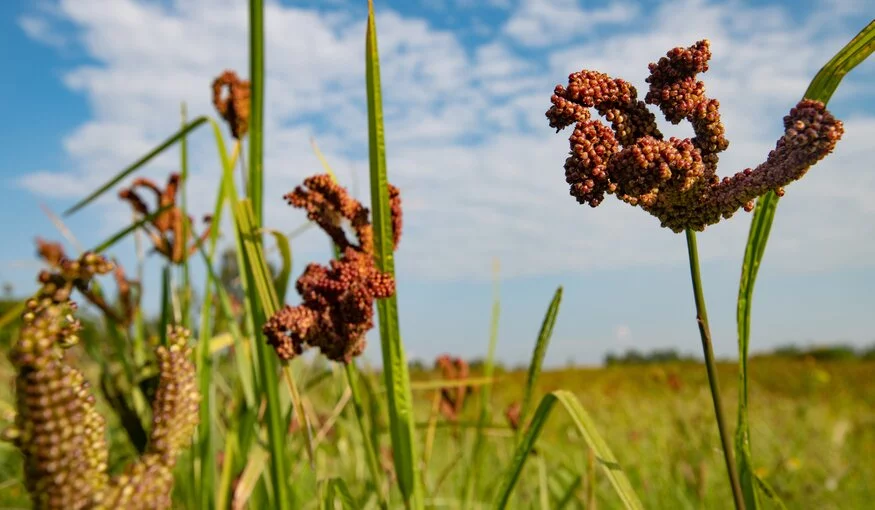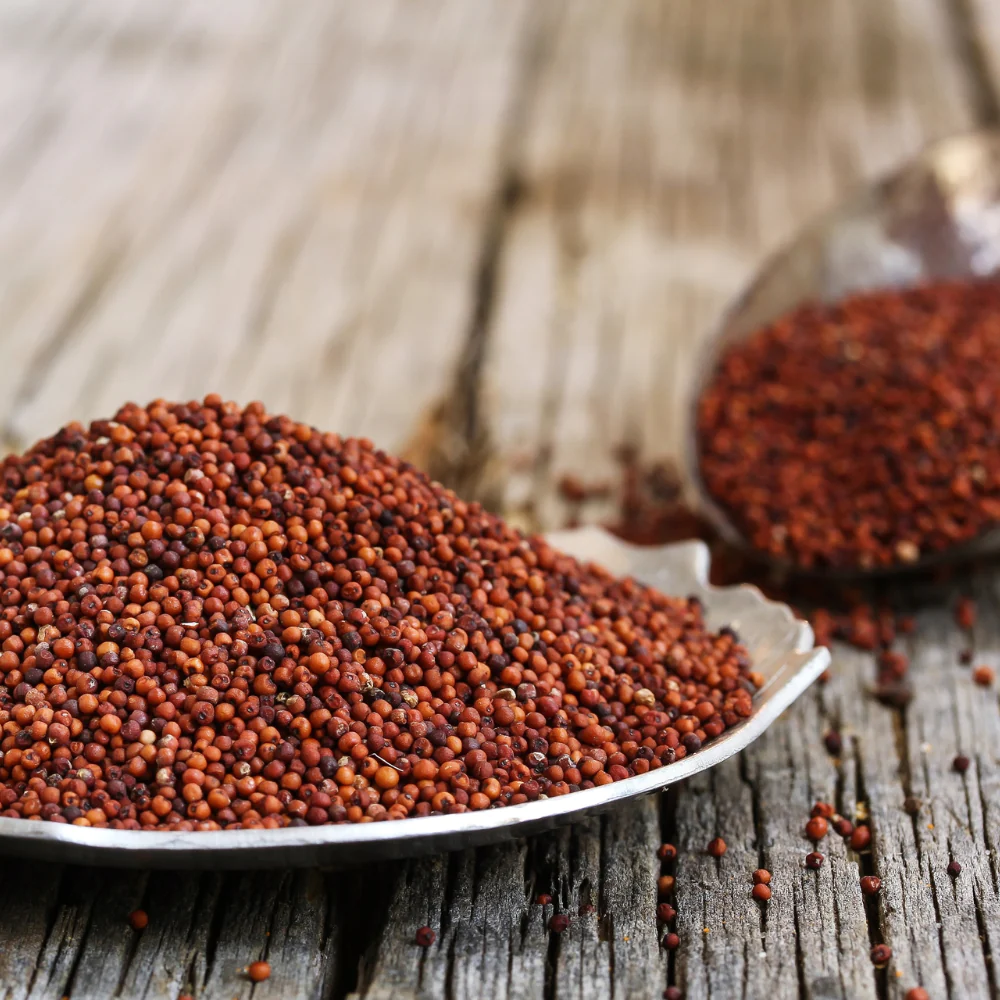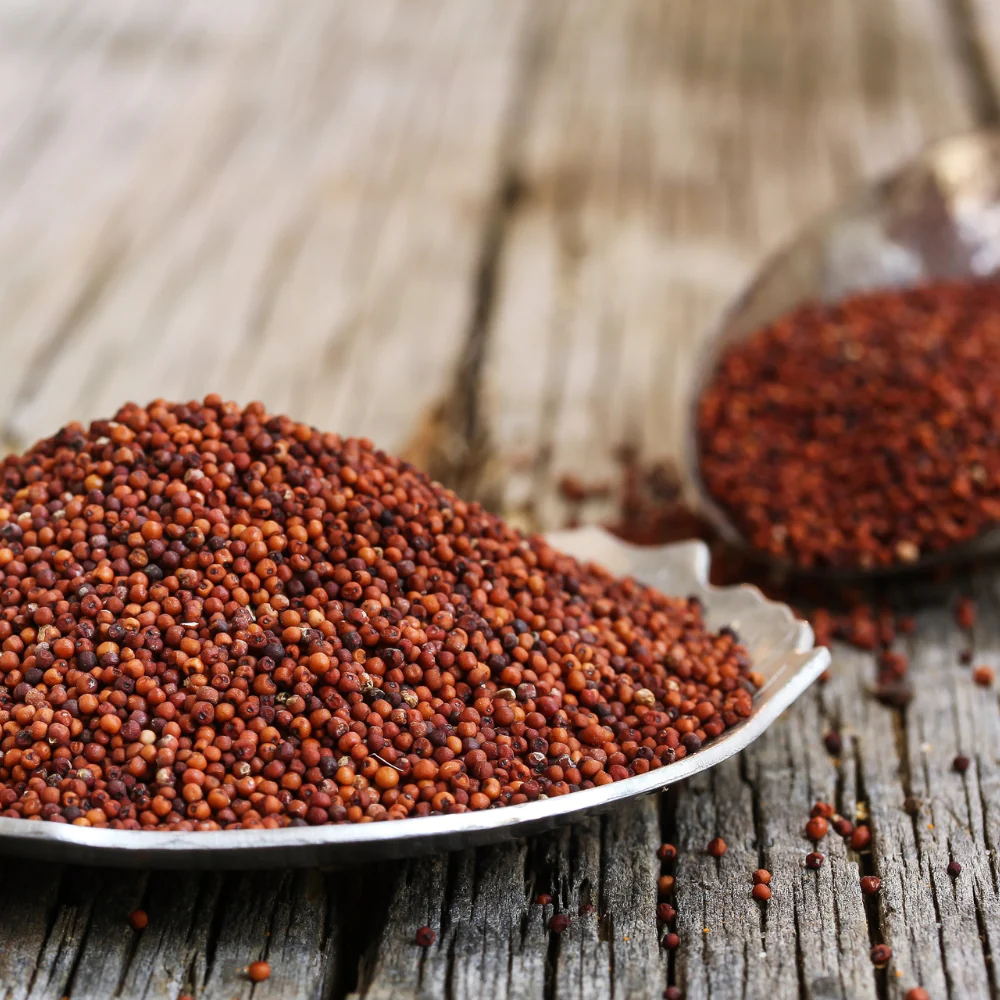Finger millet (Eleusine coracana), an annual cereal belonging to the grass family Poaceae, holds a significant place in Uganda’s agricultural landscape. With its versatility, adaptability, and rich nutritional content, finger millet serves as a staple crop for subsistence farmers and rural communities across various regions. This article delves into the importance of finger millet, its nutritional benefits, challenges faced by its cultivation, and processes to improve its productivity and impact on Ugandans. This information was researched firsthand by Doctor Scovia Adikini, an experienced nutritionist and agriculturalist currently based in the Serere district. Dr. Scovia is the program leader for a dry land cereals research program at NARO Uganda.

Also Read: Basic Tips For Excellent Dental Hygiene
Author
Dr. Scovia Adikini
Geographical Distribution Of Finger Millet In Uganda Districts
Finger millet cultivation is concentrated in districts across Uganda’s regions, including Kabale, Hoima, Bushenyi, Masindi, Mbarara (Western region), Iganga, Kamuli, Kumi, Soroti, Mbale, Tororo (Eastern region), and Gulu, Kitgum, Lira, Apach, and Arua (Northern region). There is potential for its expansion beyond these areas, driven by its ability to thrive in diverse climatic conditions and low-moisture environments. This expansion holds promise for increasing overall production and addressing nutritional deficiencies.

What are the nutritional benefits of Millet?
Finger millet stands as a nutritional powerhouse, offering an array of health benefits. Rich in carbohydrates, dietary fiber, essential amino acids, and phytochemicals. It contributes essential nutrients to diets. Notably, the cereal plant boasts elevated levels of crucial minerals, such as calcium, manganese, phosphorus, zinc, and iron. Its slowly digestible fiber content aids in maintaining a healthy digestive system, preventing constipation, and promoting gut health. Furthermore, the crop’s mineral composition supports bone health. It also aids in preventing anemia and facilitates breast milk production in lactating mothers. Its low glycemic index helps manage blood sugar levels, making it a valuable dietary choice for those managing diabetes.
Challenges faced when growing the crop
Finger millet productivity faces challenges arising from factors such as low-yield varieties, suboptimal agronomic practices, susceptibility to pests and diseases, lowering soil fertility, and ineffective post-harvest handling methods. Therefore, to overcome these hurdles and enhance productivity, a lot of effort is required.
How To Improve Millet Production In Uganda
Raising awareness about finger millet’s nutritional significance is crucial, along with providing farmers with comprehensive knowledge about recommended agronomic practices and effective post-harvest handling techniques. Facilitating the dissemination of information about improved varieties, cultivation techniques, and preservation strategies through wing officers, researchers, policy regulators, and farmers is pivotal in achieving these goals. Educational endeavors such as training sessions, workshops, and available manuals for local conditions can empower stakeholders and drive positive change.
What Are The Climatic And Soil Requirements For Millet?
Finger millet thrives in environments with reasonable rain, ranging between 500-1000 mm, and an optimal range of 900 mm. This rain should be evenly distributed throughout the growing season to avoid long shortages. Additionally, the crop can handle rainfall as low as 130 mm and is averse to flooding. Finger millet grows in regions where average maximum temperatures exceed 27°C, and average minimum temperatures remain above 18°C, although it can endure temperatures up to 35°C. Dry weather during harvest is important to prevent grain shattering, as the crop is gathered at physiological maturity.
According to Doctor Scovia Adikini, the ideal soil pH range for finger millet is 4.5 to 8.0. The crop can thrive in a diverse range of soils, from rich loam to poorer upland soil types. This is constant as long as there is proper drainage. However, heavy clay soils with poor drainage should not be present due to their harmful impact on growth and yield.
Challenges in Finger Millet Production
Weeds and Their Impact
Weeds pose a significant challenge to finger millet production, particularly during the rainy season. Numerous weed species, including grasses like Eleusine indica and E. africana, sedges such as Cyperus rotundus and Nutsedge Cyperus, as well as broad-leaved weeds like poison ivy and wandering jew, compete with finger millet for resources. Consequently, these weeds interfere with the crop in several ways:
- Competition for Soil Moisture: Weeds tend to demand more water than the crop, leading to reduced moisture availability for finger millet.
- Competition for Nutrients: Weeds outcompete the crop for nutrients like nitrogen, phosphorus, and potassium, resulting in nutrient deficiency and reduced yield.
- Competition for Light: Fast-growing weeds create dense canopies that overshadow finger millet, limiting its access to sunlight.
- Allelopathic Effects: Some weeds, such as nut sedges and Johnson grass, produce chemicals that hinder finger millet growth.
- Parasitic and Alternate Hosts: Weeds like striga act as parasites, draining resources from the crop. Weeds can also harbor pests and diseases that affect the crop.
- Quality and Safety Concerns: Weeds produce seeds that pollute finger millet grain, impacting its quality. Some weeds, like poison ivy, can be toxic to humans.
Climatic and Soil Requirements
Successful finger millet cultivation hinges on proper climatic and soil conditions. The crop thrives best in environments with medium rainfall between 500-1000 mm, spread evenly throughout the growing season. It handles temperatures up to 35 °C but requires dry weather during harvest to prevent shattering. Finger millet grows well in soils with a pH ranging from 4.5 to 8.0. It adapts to various soil types, but heavy clay soils with poor drainage.
Agronomic Practices for Finger Millet Production
Field Preparation
To ensure optimal growth, finger millet requires a well-prepared seedbed. The field should be selected based on drainage and the absence of millet cultivation for the past two years to minimize volunteer plants. Land preparation involves plowing and harrowing to bury crop residues, volunteers, and weeds. Initial plowing is useful during the dry season to eliminate weed seeds and pathogens.
Planting Time and Seed Requirements
Planting should begin with the first effective rains, typically between March and April for the first season and July and August for the second season. A seed rate of 4 kg/acre is advised for achieving the desired plant population. Though seeds are often untreated in Uganda, seed treatment can enhance seedling establishment and protect against pests and diseases.
Weed Management Strategies
Weed management is integral to ensuring finger millet productivity. Employing an inclusive approach encompassing preventive, cultural, biological, mechanical, and chemical control methods is essential.
- Preventive Measures: Planting clean, weed-free seeds and maintaining equipment free from weed seeds can prevent weed introduction.
- Cultural Practices: Opt for fitting seed varieties that naturally stop weed growth. Timely planting, proper spacing, and intercropping enhance crop competitiveness.
- Mechanical Control: Manual methods, like hand hoeing, can control weeds effectively in small farms.
- Chemical Control: Selective herbicides can judiciously target specific weed species without harming the crop.
Conclusion
The role of finger millet in the Ugandan agricultural sector is clearly very significant. It has many nutritional benefits, adaptability to various conditions, and potential for poverty relief. Consequently, this makes finger millet a cornerstone of food security and economic strength. By handling challenges through improved practices, enhanced awareness, and knowledge dissemination, Uganda can unlock finger the crop’s full potential. Collaborative efforts involving all stakeholders hold the key to promoting a more tolerable, resilient, and nourished future for the nation.




